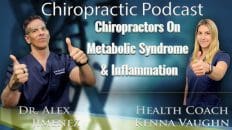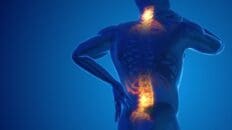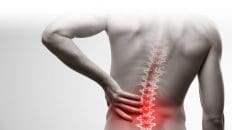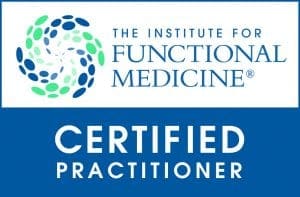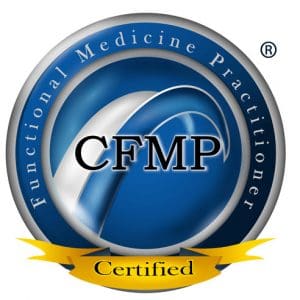Uncover techniques combining poses for sciatica with chiropractic care. Maximize your recovery and live pain-free.
Table of Contents
Chiropractic Care for Sciatica Pain Relief: A Comprehensive Guide
Sciatica pain can feel like an uninvited guest crashing your daily routine, radiating from your lower back down your leg like a grumpy lightning bolt. If you’ve ever winced while sitting down or hesitated to bend over for fear of that sharp, shooting pain, you’re not alone. Sciatica affects up to 40% of people at some point in their lives, and it’s more than just a pain in the… well, you know where (Robertson et al., 2019). But here’s the good news: chiropractic care, backed by clinical rationale and expert practitioners like Dr. Alexander Jimenez, DC, APRN, FNP-BC, offers a promising, non-invasive way to tackle sciatica and help you live your best life. In this blog post, we’ll dive into the nitty-gritty of sciatica, explore how the musculoskeletal system plays a role, and highlight why chiropractic care—sometimes paired with specific poses—can be a game-changer. Plus, we’ll touch on Dr. Jimenez’s expertise in personal injury cases in El Paso, Texas, and how his unique approach bridges medical and legal needs. Buckle up for a journey through science, stretches, and a sprinkle of humor to keep things light!
What Is Sciatica and Why Does It Hurt So Much?
Sciatica isn’t just a fancy term for back pain—it’s a specific condition caused by irritation or compression of the sciatic nerve, the longest nerve in your body. This nerve runs from your lower back, through your hips and buttocks, and down each leg. When it gets pinched or irritated, it’s like the nerve throws a temper tantrum, sending pain, numbness, or tingling down one leg, sometimes making you feel like you’re auditioning for a pirate movie with a limp (Ropper & Zafonte, 2015).
The most common culprit? A herniated disc in the lumbar spine presses on the nerve roots that feed into the sciatic nerve. Other causes include spinal stenosis (a narrowing of the spinal canal), piriformis syndrome (where a tight muscle in your butt aggravates the nerve), or even obesity, which adds extra pressure on your spine (Zhang et al., 2021). Imagine your spine as a busy highway: if there’s a traffic jam (like a bulging disc), the sciatic nerve gets stuck in the gridlock, causing chaos in the form of pain.
Sciatica can disrupt your daily routine in ways that make you want to throw your hands up in defeat. Simple tasks like sitting at your desk, driving to the grocery store, or even tying your shoes can feel like climbing Mount Everest. Chronic sciatica, which lingers for more than three months, can also take a toll on your mental health, making you feel like you’re stuck in a never-ending episode of “Pain: The Sequel” (Koes et al., 2007).
References
Koes, B. W., van Tulder, M. W., & Peul, W. C. (2007). Diagnosis and treatment of sciatica. BMJ, 334(7607), 1313–1317. https://doi.org/10.1136/bmj.39223.428495.BE
Ropper, A. H., & Zafonte, R. D. (2015). Sciatica. New England Journal of Medicine, 372(13), 1240–1248. https://doi.org/10.1056/NEJMra1410151
Zhang, X., Zhang, Z., Wen, J., et al. (2021). Causal associations of obesity with the intervertebral degeneration, low back pain, and sciatica: A two-sample Mendelian randomization study. Frontiers in Endocrinology, 12, 740745. https://doi.org/10.3389/fendo.2021.740745
The Musculoskeletal System and Sciatica: A Not-So-Friendly Relationship
Your musculoskeletal system—think bones, muscles, and joints—is like the scaffolding of a building. When it’s sturdy, everything runs smoothly. But when something’s off, like a misaligned spine or a tight muscle, it can wreak havoc on the sciatic nerve. Let’s break it down:
- Spinal Alignment and Discs: The lumbar spine (lower back) houses the nerve roots that form the sciatic nerve. A herniated or bulging disc can press on these roots, causing inflammation and pain. It’s like a jelly donut squishing out its filling—except the filling is pressing on your nerve (Ropper & Zafonte, 2015).
- Muscles and Soft Tissues: The piriformis muscle, located deep in your buttocks, can tighten or spasm, irritating the sciatic nerve. This is especially common in folks who sit for long periods (think desk warriors or Netflix marathoners). Other muscles, like the hamstrings or hip flexors, can also contribute to poor posture, adding stress to the spine.
- Obesity and Posture: Extra body weight, especially around the midsection, increases pressure on the spine, potentially worsening disc issues or nerve compression (Zhang et al., 2021). Poor posture, like slouching, can also misalign the spine, making it easier for the sciatic nerve to get cranky.
This dysfunction can turn your daily routine into a circus act. Walking might feel like navigating a tightrope, and bending over could resemble a clumsy attempt at a backflip. The pain can also lead to compensatory movements, where you favor one side of your body, potentially causing muscle imbalances or additional strain—talk about a domino effect!
References
Ropper, A. H., & Zafonte, R. D. (2015). Sciatica. New England Journal of Medicine, 372(13), 1240–1248. https://doi.org/10.1056/NEJMra1410151
Zhang, X., Zhang, Z., Wen, J., et al. (2021). Causal associations of obesity with the intervertebral degeneration, low back pain, and sciatica: A two-sample Mendelian randomization study. Frontiers in Endocrinology, 12, 740745. https://doi.org/10.3389/fendo.2021.740745
Why Chiropractic Care? The Clinical Rationale
Chiropractic care is like a superhero swooping in to save the day for your sciatic nerve. Unlike medications like gabapentin or pregabalin, which have shown limited effectiveness for sciatica and come with side effects like dizziness or drowsiness (Enke et al., 2022), chiropractic care focuses on addressing the root cause of the pain—literally. Here’s why it works, backed by clinical insights:
- Spinal Adjustments: Chiropractors use precise, controlled movements to realign the spine, reducing pressure on the sciatic nerve. A case report showed that spinal manipulation and mobilization can significantly reduce sciatica pain by improving spinal mechanics and decreasing inflammation (Santilli et al., 2018). It’s like giving your spine a gentle nudge to get back in line.
- Muscle Relaxation: Chiropractic techniques, such as soft tissue therapy, can loosen tight muscles like the piriformis, which often contribute to nerve irritation. This is like telling that grumpy muscle to chill out and stop bullying the sciatic nerve.
- Improved Mobility: By restoring joint function and reducing muscle tension, chiropractic care helps you move better, breaking the cycle of pain and stiffness. Studies suggest that spinal manipulation can improve functional status in patients with chronic low back pain, which often overlaps with sciatica (Rubinstein et al., 2019).
- Holistic Approach: Chiropractors like Dr. Alexander Jimenez take a whole-body approach, addressing lifestyle factors like posture, exercise, and weight management. This is crucial since obesity is a known risk factor for sciatica (Zhang et al., 2021).
Unlike medications, which may only mask symptoms (and not very well, according to research), chiropractic care aims to fix the underlying issue. For example, a systematic review found no significant benefit of gabapentin or pregabalin over placebo for sciatica pain, with added risks of adverse events (Enke et al., 2022). Chiropractic care, on the other hand, is non-invasive and has a low risk of side effects, making it a safer bet for long-term relief.
References
Enke, O., New, H. A., New, C. H., et al. (2022). A systematic review and meta-analysis of the effectiveness and adverse events of gabapentin and pregabalin for sciatica pain. Atención Primaria, 54(1), 102144. https://doi.org/10.1016/j.aprim.2021.102144
Rubinstein, S. M., de Zoete, A., van Middelkoop, M., et al. (2019). Benefits and harms of spinal manipulative therapy for the treatment of chronic low back pain: Systematic review and meta-analysis of randomised controlled trials. BMJ, 364, l689. https://doi.org/10.1136/bmj.l689
Santilli, V., Beghi, E., & Finucci, S. (2018). Spinal manipulation and mobilization forces delivered treating sciatica: A case report. Journal of Manipulative and Physiological Therapeutics, 41(6), 529–534. https://doi.org/10.1016/j.jmpt.2018.02.003
Zhang, X., Zhang, Z., Wen, J., et al. (2021). Causal associations of obesity with the intervertebral degeneration, low back pain, and sciatica: A two-sample Mendelian randomization study. Frontiers in Endocrinology, 12, 740745. https://doi.org/10.3389/fendo.2021.740745
Dr. Alexander Jimenez: El Paso’s Chiropractic Champion
In El Paso, Texas, Dr. Alexander Jimenez stands out as a beacon of hope for those battling sciatica and personal injury-related pain. As a Doctor of Chiropractic, Advanced Practice Registered Nurse, and Family Nurse Practitioner, Dr. Jimenez brings a unique blend of expertise to the table. His practice, accessible via HealthVoice360 and LinkedIn, focuses on integrative wellness, combining chiropractic care with advanced diagnostic techniques.
Dr. Jimenez’s approach is rooted in clinical precision. He uses advanced imaging (like X-rays or MRIs) and diagnostic evaluations to pinpoint the exact cause of sciatica, whether it’s a herniated disc, spinal misalignment, or muscle-related issue. His dual-scope procedures—combining chiropractic adjustments with medical insights—allow for tailored treatment plans that address both symptoms and underlying causes. For example, he might use spinal manipulation to relieve nerve pressure while prescribing specific stretches to improve flexibility and prevent recurrence.
In personal injury cases, such as those from car accidents or workplace incidents, Dr. Jimenez shines as a liaison between medical care and legal documentation. In El Paso, where personal injury cases are common due to the city’s active lifestyle and busy roads, his ability to provide detailed medical reports is invaluable. These reports, backed by diagnostic evidence, help attorneys build strong cases for victims, ensuring they receive the care and compensation they deserve. Dr. Jimenez’s work bridges the gap between healing the body and navigating the legal system, making him a trusted figure in the community.
References
Jimenez, A. (n.d.). HealthVoice360. Retrieved from https://healthvoice360.com/
Jimenez, A. (n.d.). LinkedIn profile. Retrieved from https://www.linkedin.com/in/dralexjimenez/
Sciatica Secrets Revealed- Video
Incorporating Poses to Soothe Sciatica
Chiropractic care often goes hand-in-hand with therapeutic exercises, and certain yoga-inspired poses can complement spinal adjustments by stretching and strengthening key muscles. According to Yoga International, specific poses can help soothe sciatica by releasing tension in the lower back, hips, and legs (Woolery, 2017). Dr. Jimenez often incorporates similar movements into his treatment plans to enhance mobility and reduce pain. Here are seven poses that align with chiropractic principles, along with their benefits:
- Child’s Pose (Balasana): This gentle stretch opens the hips and lower back, relieving pressure on the sciatic nerve. It’s like giving your spine a cozy hug, encouraging relaxation and reducing inflammation.
- Cat-Cow Pose: This dynamic movement improves spinal flexibility, helping to mobilize the lumbar spine and reduce stiffness. It’s like oiling a rusty hinge to keep things moving smoothly.
- Downward-Facing Dog: This pose stretches the hamstrings and calves, which can become tight and exacerbate sciatica. It also promotes spinal alignment, complementing chiropractic adjustments.
- Pigeon Pose: By targeting the piriformis muscle, this pose can relieve nerve irritation caused by muscle tightness. It’s like telling that pesky piriformis to take a chill pill.
- Bridge Pose: This strengthens the glutes and core, supporting the lower back and reducing strain on the spine. Think of it as building a sturdy bridge to support your sciatic nerve.
- Seated Forward Bend: This stretches the lower back and hamstrings, improving flexibility and reducing nerve compression. It’s a gentle way to lengthen the spine without overdoing it.
- Supine Twist: This pose promotes spinal mobility and relieves tension in the lower back, helping to ease sciatic pain. It’s like wringing out a towel to release all the tightness.
These poses, when guided by a chiropractor like Dr. Jimenez, can be tailored to your specific condition, ensuring they’re safe and effective. They work by improving flexibility, reducing muscle tension, and supporting spinal health, all of which align with the goals of chiropractic care.
References
Woolery, A. (2017). 7 poses to soothe sciatica. Yoga International. Retrieved from https://yogainternational.com/article/view/7-poses-to-soothe-sciatica/
Complementary Approaches: Acupuncture and Neural Mobilization
Chiropractic care isn’t the only player in town. Other non-invasive treatments, like acupuncture and neural mobilization, can also help manage sciatica. Acupuncture, which involves inserting thin needles into specific points, may reduce pain by modulating neuropathic pain mechanisms (Li et al., 2024). A randomized controlled pilot study found acupuncture to be a promising option for sciatica, though more research is needed (Qin et al., 2019). Dr. Jimenez might integrate acupuncture referrals into his holistic approach, especially for patients with persistent neuropathic pain.
Neural mobilization, a physiotherapy technique, involves gentle movements to “free up” the sciatic nerve from surrounding tissues. A systematic review showed that neural mobilization can reduce pain and improve function in patients with low back and radicular pain (Neto et al., 2017). These techniques complement chiropractic care by addressing nerve mobility, much like how stretches enhance spinal adjustments.
References
Li, H. L., Liu, Y., & Zhang, Y. (2024). Acupuncture for radicular pain: A review of analgesic mechanism. Frontiers in Neuroscience, 18, 1344232. https://doi.org/10.3389/fnins.2024.1344232
Neto, T., Freitas, S. R., & Marques, M. J. (2017). Neural mobilization in low back and radicular pain: A systematic review. Journal of Back and Musculoskeletal Rehabilitation, 30(4), 677–688. https://doi.org/10.3233/BMR-160647
Qin, Z., Liu, X., & Yao, Q. (2019). Therapeutic efficacy and the impact of the “dose” effect of acupuncture to treat sciatica: A randomized controlled pilot study. Journal of Pain Research, 12, 351–360. https://doi.org/10.2147/JPR.S178436
Patient Education: Empowering Recovery
Education is a cornerstone of managing sciatica, and Dr. Jimenez emphasizes empowering patients with knowledge. A systematic review of patient education materials found that providing clear, evidence-based information about sciatica’s causes, prognosis, and self-management options improves outcomes (Saper et al., 2022). Patients who understand their condition are more likely to stick to treatment plans, whether it’s doing prescribed stretches or maintaining proper posture.
Dr. Jimenez often provides tailored advice, such as avoiding prolonged sitting, using ergonomic chairs, or incorporating low-impact exercises like walking or swimming. He might also recommend weight management strategies, given the link between obesity and sciatica (Zhang et al., 2021). It’s like giving patients a roadmap to navigate their pain, with chiropractic care as the trusty GPS.
References
Saper, R. B., Hicks, R. A., & Delitto, A. (2022). Patient education materials for non-specific low back pain and sciatica: A systematic review and meta-analysis. PLoS ONE, 17(10), e0275206. https://doi.org/10.1371/journal.pone.0275206
Zhang, X., Zhang, Z., Wen, J., et al. (2021). Causal associations of obesity with the intervertebral degeneration, low back pain, and sciatica: A two-sample Mendelian randomization study. Frontiers in Endocrinology, 12, 740745. https://doi.org/10.3389/fendo.2021.740745
Personal Injury Cases in El Paso: Dr. Jimenez’s Expertise
El Paso’s bustling streets and active community mean personal injury cases—think car accidents, slip-and-falls, or workplace injuries—are all too common. Sciatica often arises from these incidents, especially when trauma causes spinal misalignment or disc herniation. Dr. Jimenez’s expertise makes him a go-to practitioner for victims seeking both relief and justice.
Using advanced imaging like MRIs or CT scans, Dr. Jimenez identifies the extent of injuries, whether it’s a herniated disc or soft tissue damage. His diagnostic evaluations, combined with dual-scope procedures (integrating chiropractic and medical interventions), ensure comprehensive care. For example, he might use spinal manipulation to address misalignment while coordinating with physical therapists for neural mobilization.
In personal injury cases, Dr. Jimenez’s detailed medical reports are gold for attorneys. They provide clear, evidence-based documentation of injuries, treatments, and prognoses, helping victims secure fair compensation. His role as a liaison ensures seamless communication between medical and legal teams, making the process smoother than a sunny El Paso afternoon.
References
Jimenez, A. (n.d.). HealthVoice360. Retrieved from https://healthvoice360.com/
Jimenez, A. (n.d.). LinkedIn profile. Retrieved from https://www.linkedin.com/in/dralexjimenez/
A Dash of Humor: Keeping Sciatica at Bay
Let’s face it—sciatica can make you feel like you’re starring in a drama called “My Back Hates Me.” But a little humor can go a long way. Picture your sciatic nerve as a cranky neighbor who complains every time you mow the lawn (or sit too long). Chiropractic care is like inviting that neighbor over for a friendly chat, calming them down with a spinal adjustment and a good stretch. And those yoga poses? They’re like sending your nerve a bouquet of flowers to say, “Let’s be friends again!” By combining Dr. Jimenez’s expertise with a few lighthearted stretches, you can tell sciatica to take a hike—preferably a pain-free one.
Conclusion: A Serious Note on Sciatica Relief
Sciatica is no laughing matter, despite the occasional chuckle we’ve shared. It’s a debilitating condition that can disrupt your life, but chiropractic care offers a scientifically grounded, non-invasive solution. By addressing spinal misalignments, muscle tension, and lifestyle factors, chiropractors like Dr. Alexander Jimenez help patients reclaim their mobility and quality of life. His integrative approach, combining advanced diagnostics with tailored treatments, sets a high standard in El Paso, especially for personal injury victims needing both medical and legal support.
Disclaimer: This blog post is for informational purposes only and should not be taken as medical advice. Always consult a qualified healthcare provider, such as a chiropractor or physician, before starting any treatment for sciatica or other conditions. Individual results may vary, and professional guidance is essential for safe and effective care.
References
Enke, O., New, H. A., New, C. H., et al. (2022). A systematic review and meta-analysis of the effectiveness and adverse events of gabapentin and pregabalin for sciatica pain. Atención Primaria, 54(1), 102144. https://doi.org/10.1016/j.aprim.2021.102144
Koes, B. W., van Tulder, M. W., & Peul, W. C. (2007). Diagnosis and treatment of sciatica. BMJ, 334(7607), 1313–1317. https://doi.org/10.1136/bmj.39223.428495.BE
Li, H. L., Liu, Y., & Zhang, Y. (2024). Acupuncture for radicular pain: A review of analgesic mechanism. Frontiers in Neuroscience, 18, 1344232. https://doi.org/10.3389/fnins.2024.1344232
Neto, T., Freitas, S. R., & Marques, M. J. (2017). Neural mobilization in low back and radicular pain: A systematic review. Journal of Back and Musculoskeletal Rehabilitation, 30(4), 677–688. https://doi.org/10.3233/BMR-160647
Qin, Z., Liu, X., & Yao, Q. (2019). Therapeutic efficacy and the impact of the “dose” effect of acupuncture to treat sciatica: A randomized controlled pilot study. Journal of Pain Research, 12, 351–360. https://doi.org/10.2147/JPR.S178436
Ropper, A. H., & Zafonte, R. D. (2015). Sciatica. New England Journal of Medicine, 372(13), 1240–1248. https://doi.org/10.1056/NEJMra1410151
Rubinstein, S. M., de Zoete, A., van Middelkoop, M., et al. (2019). Benefits and harms of spinal manipulative therapy for the treatment of chronic low back pain: Systematic review and meta-analysis of randomised controlled trials. BMJ, 364, l689. https://doi.org/10.1136/bmj.l689
Santilli, V., Beghi, E., & Finucci, S. (2018). Spinal manipulation and mobilization forces delivered treating sciatica: A case report. Journal of Manipulative and Physiological Therapeutics, 41(6), 529–534. https://doi.org/10.1016/j.jmpt.2018.02.003
Saper, R. B., Hicks, R. A., & Delitto, A. (2022). Patient education materials for non-specific low back pain and sciatica: A systematic review and meta-analysis. PLoS ONE, 17(10), e0275206. https://doi.org/10.1371/journal.pone.0275206
Woolery, A. (2017). 7 poses to soothe sciatica. Yoga International. Retrieved from https://yogainternational.com/article/view/7-poses-to-soothe-sciatica/
Zhang, X., Zhang, Z., Wen, J., et al. (2021). Causal associations of obesity with the intervertebral degeneration, low back pain, and sciatica: A two-sample Mendelian randomization study. Frontiers in Endocrinology, 12, 740745. https://doi.org/10.3389/fendo.2021.740745
General Disclaimer
Professional Scope of Practice *
The information herein on "Chiropractic Care & Poses for Sciatica Pain Management" is not intended to replace a one-on-one relationship with a qualified health care professional or licensed physician and is not medical advice. We encourage you to make healthcare decisions based on your research and partnership with a qualified healthcare professional.
Blog Information & Scope Discussions
Welcome to El Paso's Premier Wellness and Injury Care Clinic & Wellness Blog, where Dr. Alex Jimenez, DC, FNP-C, a Multi-State board-certified Family Practice Nurse Practitioner (FNP-BC) and Chiropractor (DC), presents insights on how our multidisciplinary team is dedicated to holistic healing and personalized care. Our practice aligns with evidence-based treatment protocols inspired by integrative medicine principles, similar to those found on this site and our family practice-based chiromed.com site, focusing on restoring health naturally for patients of all ages.
Our areas of multidisciplinary practice include Wellness & Nutrition, Chronic Pain, Personal Injury, Auto Accident Care, Work Injuries, Back Injury, Low Back Pain, Neck Pain, Migraine Headaches, Sports Injuries, Severe Sciatica, Scoliosis, Complex Herniated Discs, Fibromyalgia, Chronic Pain, Complex Injuries, Stress Management, Functional Medicine Treatments, and in-scope care protocols.
Our information scope is multidisciplinary, focusing on musculoskeletal and physical medicine, wellness, contributing etiological viscerosomatic disturbances within clinical presentations, associated somato-visceral reflex clinical dynamics, subluxation complexes, sensitive health issues, and functional medicine articles, topics, and discussions.
We provide and present clinical collaboration with specialists from various disciplines. Each specialist is governed by their professional scope of practice and their jurisdiction of licensure. We use functional health & wellness protocols to treat and support care for musculoskeletal injuries or disorders.
Our videos, posts, topics, and insights address clinical matters and issues that are directly or indirectly related to our clinical scope of practice.
Our office has made a reasonable effort to provide supportive citations and has identified relevant research studies that support our posts. We provide copies of supporting research studies upon request to regulatory boards and the public.
We understand that we cover matters that require an additional explanation of how they may assist in a particular care plan or treatment protocol; therefore, to discuss the subject matter above further, please feel free to ask Dr. Alex Jimenez, DC, APRN, FNP-BC, or contact us at 915-850-0900.
We are here to help you and your family.
Blessings
Dr. Alex Jimenez DC, MSACP, APRN, FNP-BC*, CCST, IFMCP, CFMP, ATN
email: coach@elpasofunctionalmedicine.com
Multidisciplinary Licensing & Board Certifications:
Licensed as a Doctor of Chiropractic (DC) in Texas & New Mexico*
Texas DC License #: TX5807, Verified: TX5807
New Mexico DC License #: NM-DC2182, Verified: NM-DC2182
Multi-State Advanced Practice Registered Nurse (APRN*) in Texas & Multistate
Multistate Compact RN License by Endorsement (42 States)
Texas APRN License #: 1191402, Verified: 1191402 *
Florida APRN License #: 11043890, Verified: APRN11043890 *
* Prescriptive Authority Authorized
ANCC FNP-BC: Board Certified Nurse Practitioner*
Compact Status: Multi-State License: Authorized to Practice in 40 States*
Graduate with Honors: ICHS: MSN-FNP (Family Nurse Practitioner Program)
Degree Granted. Master's in Family Practice MSN Diploma (Cum Laude)
Dr. Alex Jimenez, DC, APRN, FNP-BC*, CFMP, IFMCP, ATN, CCST
My Digital Business Card
RN: Registered Nurse
APRNP: Advanced Practice Registered Nurse
FNP: Family Practice Specialization
DC: Doctor of Chiropractic
CFMP: Certified Functional Medicine Provider
MSN-FNP: Master of Science in Family Practice Medicine
MSACP: Master of Science in Advanced Clinical Practice
IFMCP: Institute of Functional Medicine
CCST: Certified Chiropractic Spinal Trauma
ATN: Advanced Translational Neutrogenomics









